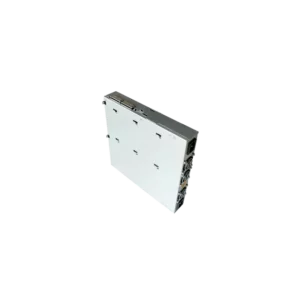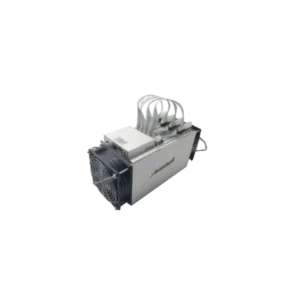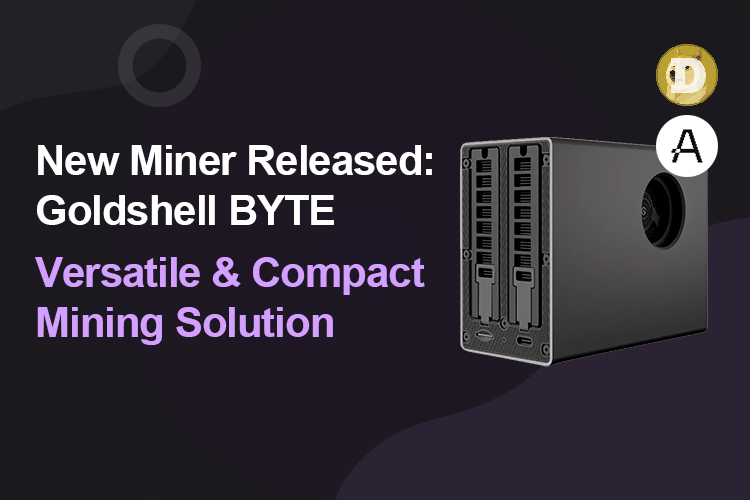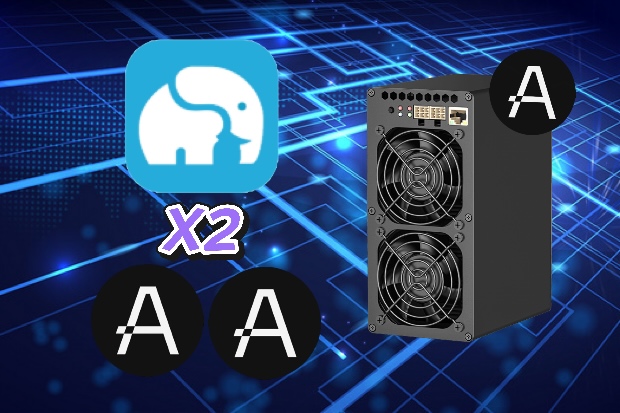Table of Contents
- 1. Not just the halving: Why analysts are bullish on Bitcoin in 2024
- 2. Bitcoin miner Hut 8 doubles down on diversification, discipline around halving
- 3. Historic Month for Bitcoin Miners — Income Peaks at $2 Billion
- 4. The Great Bitcoin Mining Mirage: Separating Fact from Fiction
- 5. Bitcoin Mining and BlockDAG Mining: Can the Democratisation of Mining Support Renewable Energy?

04/02/2024
0 Comments
1. Not just the halving: Why analysts are bullish on Bitcoin in 2024
The Bitcoin halving in April will only be one small part of why the cryptocurrency could see phenomenal gains this year, according to multiple industry analysts. Next month, the Bitcoin halving will reduce daily BTC production by about 450 BTC from the current average daily amount of 900 BTC, investment researcher Lyn Alden told Cointelegraph.
However, Alden said the amount of supply cut pales compared to daily fiat flows in and out of crypto exchanges and Bitcoin exchange-traded funds (ETFs).
“In fact, inflows or outflows can easily exceed 10x of that value,” Alden said, adding that overall demand for Bitcoin is a “bigger factor than tightening supply. So I think the halving is important, but it’s only one factor out of many that determines the occurrence and timing of a bull market. Various measures of global liquidity, HODL waves, and other catalysts combine to serve a larger role,” Alden said, adding:
“I am bullish for the next two years due to a combination of the halving, expectations for improved global liquidity, and the fact that so many coins have rotated to strong hands in the bear market, and so a relatively minor increase in demand can move the price quite a bit.”
10x Research CEO and head analyst Markus Thielen says the current rally is “undoubtedly on par” with the 2020 and 2021 bull market, which initially peaked in April 2021.
Referring to tools like quantitative analysis, Thielen has been bullish on the price of Bitcoin after the cryptocurrency crossed its multi-year highs on March 13, 2024.
Based on historical price changes and Bitcoin’s recent new highs, 10x Research projected that Bitcoin would reach $77,000 by early April and $99,000 by May 2024.
“When Bitcoin made a new high at $68,300, we saw a wave of intraday selling, but every attempt to push down prices has been met with relentless buying,” Thielen wrote in an email to Cointelegraph on March 14.
The analyst noted that each time Bitcoin made new price breakouts in February 2013, February 2017, and November 2020, the price could grow s much as 189% after 180 days. Eventually, Bitcoin would top after nine to 11 months following the breakouts historically, Thielen noted.
“Moreover, geopolitical risks and uncertainties surrounding the U.S. elections could continue to buoy demand, marking the beginning of a sustained bull run in the future,” Li added.
Programmed to occur once per 210,000 blocks or roughly every four years, Bitcoin halvings are designed to maintain Bitcoin’s deficit and counteract inflation.
Since its launch in 2009, Bitcoin has come through three halving events in 2012, 2016 and 2020, cutting its miner incentive from the initial 50 BTC to the current 6.5 BTC. The soon-to-come Bitcoin halving in 2024 will further decrease the mining reward from 6.5 BTC to 3.125 BTC.
Historically, Bitcoin halvings have been associated with post-halving rallies. For example, Bitcoin skyrocketed about 3,000% in 17 months after halving in 2016, reaching a historic milestone of $20,000 in December 2017.
2. Bitcoin miner Hut 8 doubles down on diversification, discipline around halving
Hut 8 looks to deploy its large stack of bitcoin holdings with “discipline” heading into the bitcoin halving while further diversifying its revenue streams, the company’s chief executive said.
The company, which completed a merger of equals with US Bitcoin Corp last year, tallied $60.6 million in revenue during the second half of 2023. Net income was $6.2 million over that span.
Nearly 70% of that revenue comes from crypto mining, CEO Asher Genoot said during the company’s earnings call Thursday. But Hut 8 seeks to further diversify its revenue streams across its managed services business, the CEO noted — as well as boost its standing in the high-performance computing (HPC) and AI realms.
The company jumped into the HPC space by buying wireless connectivity company TerraGo in January 2022. It signed an agreement last year to offer colocation HPC services to Canadian health authority Interior Health.
It is not the only one looking into the segment. Hive Digital Technologies rebranded last July as part of a pivot to HPC. Core Scientific said earlier this month it would lease up to 16 megawatts of capacity in its Austin data center to cloud provider CoreWeave.
Hut 8’s HPC business is “sub-scale today,” Genoot acknowledged. He added that the HPC business will need more investment to be equipped to handle AI machines.
“But we are excited about that business because we see it as a foundation to be able to grow, especially when you look at GPUs, AI and data centers and look at the different parts of the value chain in that ecosystem,” he said on the call.
Seeking out growth, with discipline
Hut 8 held 9,110 bitcoin (BTC), as of Feb. 29 — valued at roughly $650 million Thursday morning.
The miner is set to use its bitcoin reserves to take advantage of growth opportunities around the Bitcoin halving — expected on or around April 20. At that point per-block mining rewards are set to drop from 6.25 BTC to 3.125 BTC, putting financial pressure on the segment’s participants.
Hut 8 is considering various M&A opportunities like buying sites and properties, as well as machine purchases. But Genoot previously told Blockworks that Hut 8 would not seek out growth at all costs — adding that it would look to not overpay for sites, for example, when possible to develop its infrastructure for less.
Executives noted during the Thursday call that it would be closely monitoring the prices of mining machines, adding the company may choose to wait until after the halving, or when newer-generation machines are available.
Similarly, Core Scientific CEO Adam Sullivan recently told Blockworks his company would look to buy machines — at lower prices — from struggling miners unable to afford parts of their existing orders.
It is also set to continue nixing inefficiencies, like retiring old machines — as it did upon shuttering operations at its Drumheller facility in Alberta, Canada earlier this month.
Bitcoin Miners‘ Earnings Hit Record $2 Billion in March Ahead of Halving Event
3. Historic Month for Bitcoin Miners — Income Peaks at $2 Billion
As we edge closer to the halving event, bitcoin (BTC) miners have seen a significant increase in their earnings, both from collected rewards and transfer fees. March set a new benchmark as the month with the highest revenue in the last year.
Moreover, the milestone was also marked as the highest record month for miner income in the network’s lifetime. According to the latest figures, miners raked in $2.01 billion, with $85.81 million of this total coming from transaction fees. The previous peak before March 2024 was observed in May 2021, when earnings hit $1.74 billion.
Throughout March, bitcoin mining pools successfully mined 4,412 blocks, with Foundry USA leading the charge by uncovering 1,312 of those blocks. This achievement indicates that Foundry was responsible for approximately 29.74% of the network’s total during the month.
Antpool came in second, discovering 989 blocks, which equates to 22.42% of the total blocks mined in March. Hot on the heels of Foundry and Antpool were Viabtc, F2pool, and Binance Pool respectively. As the month draws to a close, data reveals that 54 mining entities actively contribute hashrate to the network.
Currently, the Bitcoin network’s hashrate is maintaining a steady pace at 606 exahash per second (EH/s), with a noticeable increase of 20 EH/s over the last month. Bitcoin’s hashprice, which estimates the daily value of one petahash per second (PH/s) of mining power, consistently stayed above the $100 mark throughout the month.
Initially, on March 1, the hashprice started at roughly $103.24 and climbed to $110.39 by the end of the month, as reported by Luxor’s hashrateindex.com. Notably, on March 13, the hashprice for 1 PH/s per day soared past the $120 range. At the time of writing, at block height 837,246, there’s approximately 2,754 blocks left until the fourth halving.
4. The Great Bitcoin Mining Mirage: Separating Fact from Fiction
As the sun rises on the digital horizon, Bitcoin emerges as the flag-bearer of a financial revolution. But in its shadow lurks a jungle of misconceptions, drawing in adventurers with the promise of golden treasures. Bitcoin mining, the alchemy at the heart of this digital gold rush, is believed by some to be a mere sleight of hand, while to others, it is the El Dorado of the 21st century. Enter BTC Miner – but before you do, buckle up for an excursion into the reality of this modern-day gold mine.
Bitcoin mining is no charlatan’s game; it is as real as the very Internet you surf on. It’s a digital forge where transactions are smelted into blocks and added to the blockchain, with miners as the dedicated blacksmiths hammering away at cryptographic puzzles. For their sweat, they earn themselves freshly minted bitcoins – but the work demands Herculean strength in computational power.
Amidst this gritty endeavor, platforms like BTC Miner emerge, claiming to be the Pegasus to your Bellerophon, lifting you effortlessly into the mining stratosphere. But hold your horses – are these claimants your trusted steed or a mythical beast leading you off a cliff?
Many a miner has been led astray by siren songs of effortless riches, only to find their pockets lined with cobwebs instead of coins. Pledges of instant wealth should not enchant you into a stupor. True mining missions divulge their battle plans – their facilities, their arsenal of hardware – not shroud them in mystery.
And what of its glittering promises? A seasoned explorer in the crypto realm knows that profit is no siren; she does not sing sweetly into every ear. Like our trusty friend gravity, profitability is tethered to reality – energy costs, Bitcoin’s value, the current difficulty level of mining puzzles. If BTC Miner’s promises sound like they’ve been plucked from the ether, chances are, they may well have been.
Before leaping into the mining abyss with BTC Miner, cast your net across the ocean of user feedback. For a verified platform will, like a city on a hill, not be hidden; its citizens speak of it in the forums of Reddit, the halls of Bitcointalk, and the buzzing marketplaces of Twitter.
And for those still parched for knowledge, drink from the wells of trusted sources. The ancients of Bitcoin.org lay out the scrolls of digital currency wisdom, CoinDesk chronicles the daily ebb and flow of crypto affairs, and CryptoCompare juxtaposes the lore of currencies for your prudent judgement.
Beware, daring netizens, for here be dragons. BTC Miner and its ilk must be approached like any denizen of the wild – with caution and a speck of curiosity. The realm of cryptocurrency is littered with the bones of the reckless, so arm yourself with sagacity. For every trove uncovered, a thousand more remain but hollow fables.
As the journey continues in the exploration of the legitimacy behind BTC Miner, let this be your compass and your map. Seek the echo of authenticity in every hollow claim, and may your digital escapade yield more than just fool’s gold.
5. Bitcoin Mining and BlockDAG Mining: Can the Democratisation of Mining Support Renewable Energy?
Cryptocurrency mining has long been synonymous with a problematic amount of energy consumption, often drawing criticism for its environmental impact. Now, a recent study has suggested an intriguing partnership between cryptocurrency mining and green hydrogen production; This proposes a potential avenue for accelerating the transition to cleaner energy while fostering a more inclusive adoption.
In this article, we explore the dynamics of Bitcoin mining, introduce BlockDAG Network mining, and discuss how both approaches could contribute to the democratisation of the industry and how they can support renewable energy.
This recent study that explores the relations between green hydrogen production and cryptocurrency mining, is featured in the journal PNAS, and emphasises the synergistic potential of the “dynamic duo.”It envisions a scenario where the profits from cryptocurrency mining could be reinvested into clean hydrogen production and renewable energy initiatives.
The proposed solution in the study involves leveraging digital-made profits to drive solar and wind energy expansion indirectly through green hydrogen production. Hydrogen, produced using renewable energy, serves as an energy carrier, storing excess energy generated by intermittent sources like solar and wind for later use.
Synergy with Renewable Energy
Both Bitcoin mining and BlockDAG Network mining present opportunities to democratise the industry by offering their users a chance for passive income while still leveraging renewable energy sources and addressing the environmental concerns associated with cryptocurrency mining.
Bitcoin
Bitcoin, the pioneering cryptocurrency, operates on a Proof-of-Work (PoW) consensus mechanism. It requires miners to solve complex mathematical puzzles to validate transactions and secure the network; These operations involve data centres equipped with specialised hardware, consuming substantial energy as they validate transactions on the blockchain network. Traditionally, Bitcoin mining has relied heavily on fossil fuel-based energy sources, and until now, it has raised concerns about sustainability and environmental degradation.
Now, the PNAS study paints an optimistic picture of Bitcoin’s potential role in renewable energy expansion. Firstly, Bitcoin mining would need to be powered by clean energy sources, a departure from the predominantly fossil fuel-driven operations prevalent today. Moreover, the study suggests that energy companies or climate-focused groups, rather than conventional Bitcoin miners, would undertake the mining activities, further democratising the space, rendering it more inclusive and positive. These strategic shifts are a crucial step into ensuring that the earnings from Bitcoin mining are indeed channelled into sustainable energy projects.
BlockDAG Network
BlockDAG Network offers, in many ways, an alternative approach to blockchain consensus. Unlike linear blockchains such as Bitcoin, which organise transactions into sequential blocks, BlockDAG structures transactions in a graph-like format, enabling parallel processing and greater scalability.
BlockDAG Network introduced on the market a mining solution which aims at moulding a new era of accessibility and democratisation within the passive income generation industry.
By leveraging the unique structure of Directed Acyclic Graphs (DAGs), BlockDAG Network pioneers a system where mining isn’t confined to industrial-scale operations but can seamlessly be integrated into everyday households. Unlike traditional blockchain networks, BlockDAG doesn’t rely on the computational power race inherent in Proof of Work (PoW) consensus mechanisms, thus eliminating the need for expensive, specialised mining hardware.
In conclusion, Bitcoin mining and BlockDAG Network mining have the potential to catalyse the transition towards a more sustainable and democratic future within the cryptocurrency industry. By embracing innovation, inclusion, and sustainability, these projects can pave the path towards a greener, more democratic and resilient cryptocurrency ecosystem.













